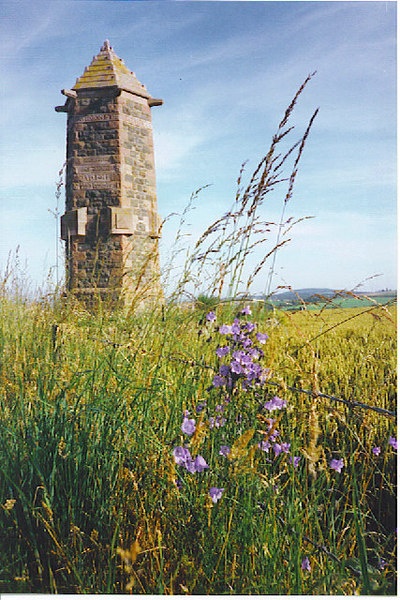The Battle of Harlaw was one of the most significant in Scotland’s history but little is known about the event which changed forever the cultural and linguistic face of the nation.
As the 600th anniversary approaches, a new call has been made for historical examination of the site, making use of advances in geophysical surveys.
The Battle of Harlaw was fought two miles west of Inverurie, Aberdeenshire, somewhere north-west from where the Harlaw Monument now stands, and was a contest over the Earldom of Ross.
The Gaelic army of Donald of Islay, Lord of the Isles, campaigned to enforce his claim to the Earldom of Ross and had encamped overnight at Harlaw on the high road from Inverness to Aberdeen.
Early in the morning of July 24, 1411, Donald’s large army was surprised by a smaller army assembled by Alexander Stewart, Earl of Mar, to defend Aberdeen against the Highland army.
The battle was of strategic importance as whoever controlled Ross, a territory stretching from Inverness to Skye, controlled northern Scotland, and held the key to manipulate the rest of Scotland down to the Tay.
As a contest however, Harlaw was indecisive. It is known that both sides fought each other to a standstill, and each claimed victory but little of the detail of what happened during the battle has been uncovered.
Ahead of the 600th anniversary, a conference organised by the University of Aberdeen’s Elphinstone Institute will be held on June 9, to examine Harlaw from many different perspectives but important evidence to establish the facts of the battle remains untapped.
Geophysical surveys, such as those carried out at Culloden which revealed new insights into the last battle of the Jacobite risings, have never been carried out at Harlaw.
Dr Ian Russell, Director of the Elphinstone Institute, said: “The Battle of Harlaw is commemorated in ballad and legend as a major conflict between Highlanders and Lowlanders but we know little of the actual events of July 24, 1411.
“Almost all we have to go on is the cultural legacy – no documentary evidence exists apart from the poems, songs and ballads written down many years after the time of the battle,” he added.
“We know that Harlaw was of great strategic importance at the time but we do not know the exact site of the battle or the numbers involved – Donald’s army was said to be 10,000 strong but modern historians think it was significantly smaller.”
What is known is that among the high-profile casualties of Harlaw were Hector Maclean of Duart, Sir Alexander Irvine of Drum and Provost Davidson of Aberdeen, who was buried in the city’s St Nicholas Church.
Although the battle itself proved indecisive, with lowlanders historically claiming that Donald had been defeated and Gaels that this was a great victory, its influence on the North-East and Aberdeen can still be felt today. Harlaw changed forever the cultural and linguistic face of Scotland. It showed that the power of the Lordship of the Isles was no longer invincible; it proved the beginning of the end for the clan system; and it gave impetus for the Scots and English languages to prosper at the expense of Gaelic.
In Aberdeen, the city reacted quickly and took steps to increase the defence of the burgh, dividing it into municipal wards. The market place, opposite the Tolbooth, was the centre for the four divisions to be known as quarters – the Green, the Fittie, the Even and the Crooked - the predecessors of the present-day Municipal Wards.
Dr Russell noted: “The Battle of Harlaw is a fascinating bit of history from a very torrid time and we are sure that there is more which can be uncovered.
“We know it was very bloody but where were the dead buried? We would expect a geophysical survey to show up signs of potential burial pits. The ballad The Battle of Harlaw talks of 50,000 Highland men marching but what route did they take?
“We will bring together historians, genealogists, battlefield archaeologists and experts in heraldry, genealogy and cultural history for the Harlaw Remembered conference on June 9 at the Trinity Hall of the Seven Incorporated Trades. It would be wonderful to see a proper geophysical survey of the site undertaken.”


